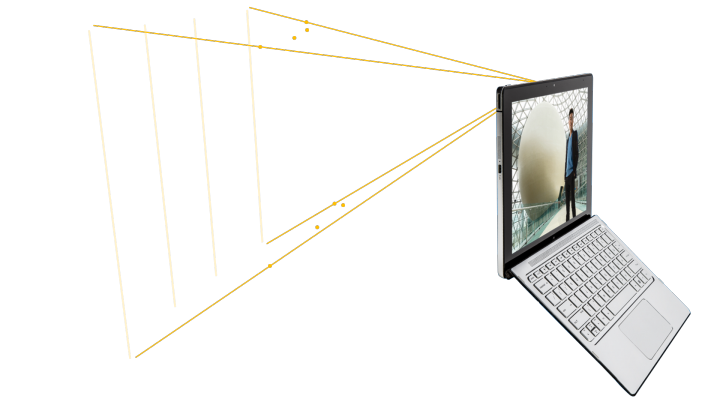Intel Going Deeper With Two New RealSense Depth Cameras

A couple of years ago, Intel brought us the RealSense Camera F200, its first short-range depth-sensing camera. Since then, RealSense has come a long way; the F200 found its way into a handful of notebooks and all-in-ones. Depth and motion detection lead to many useful applications, such as creating virtual green screens and replacing passwords with facial recognition.
The F200 is just a short range camera, however, and its limited range has caveats. Intel’s response to this is the new RealSense Camera R200, a long range depth-sensing camera. The new R200 contains dual-infrared cameras for depth sensing a high-resolution camera capable of capturing in 1080p. The R200 has an operating range of up to 3.5 meters. With this much operating room, the R200 can recognize more levels of depth, which is a huge step forward from the F200's maximum range of 1.2 meters.
The increased range that the R200 provides brings several new possibilities to the table. Intel suggested that the R200 be used to provide a more robust online shopping experience; to that end, Intel partnered with Zappos during CES to illustrate such functionality. Other examples that come to mind are 3D scanning or enhanced photography with depth-based special effects. Personally, I can imagine RealSense’s depth-perceiving technology would be useful in a pair of augmented reality lenses.
Also revealed was Intel’s RealSense Camera ZR300, which was announced along with the RealSense Smartphone Developer Kit. The DK will feature an Intel Atom x7-Z8700 SoC and will soon be available to Android developers. The ZR300 will also support Google’s Project Tango Product Development Kit. The entire ZR300 package consists of six sensors, including the RealSense Camera R200 accelerometer/gyroscope combo, an 8MP rear-facing RGB camera, and a 2MP front-facing camera. With mobile applications like Instagram and Snapchat becoming ubiquitous with the smartphone experience, a depth-perception couldn’t have come at a better time.
Alexander Quejado is an Associate Contributing Writer for Tom’s Hardware and Tom’s IT Pro. Follow Alexander Quejado on Twitter.
Follow us on Facebook, Google+, RSS,Twitter and YouTube.
Get Tom's Hardware's best news and in-depth reviews, straight to your inbox.
Tom's Hardware is the leading destination for hardcore computer enthusiasts. We cover everything from processors to 3D printers, single-board computers, SSDs and high-end gaming rigs, empowering readers to make the most of the tech they love, keep up on the latest developments and buy the right gear. Our staff has more than 100 years of combined experience covering news, solving tech problems and reviewing components and systems.
-
eklipz330 it's pretty obvious what the natural evolution of this will be. dual infrared cameras that can pivot and have the distance between the two cameras either be increased or decreased. also cameras that will be able to telescope slightly should help with distance.Reply -
basroil I would have called this "news" if it was done a few weeks ago... The F200 is ancient, and R200 was first announced way back when...Reply -
bit_user Reply
I don't see that happening. They want to make it cheaper, yet any moving parts would add significant cost, bulk, and reduce reliability.17367291 said:it's pretty obvious what the natural evolution of this will be. dual infrared cameras that can pivot and have the distance between the two cameras either be increased or decreased. also cameras that will be able to telescope slightly should help with distance.
Perhaps they'll add more cameras that aren't on the same baseline as the others. Or perhaps they'll use polarized filters.

